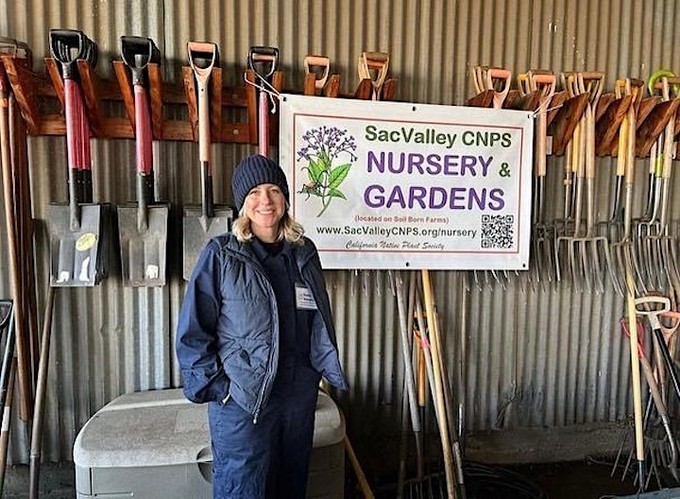
Hands-on workshop shows what to do with cuttings, divisions and seeds

Plant scientist Renee Murphy, here dressed for different weather than we currently enjoy, will lead the propagation workshop this Friday. Photo courtesy Renee Murphy
Learn how to propagate native plants during a hands-on workshop, set for 3 p.m. this Friday, Aug 18, in East Sacramento.
“Whether you dream of a flourishing garden or simply wish to expand your green thumb skills, this workshop promises to be an inspiring and informative experience for all plant enthusiasts,” say the organizers.
Plant scientist Renee Murphy, a.k.a. @midlifefarmgirl, will lead the two-hour session, billed as “Sacramento Native Plant Propagation Practice Workshop,” at McClaskey Adult Center, 5241 J St., Sacramento. Advance registration is required and space is limited. Get your ticket ($15 plus fees) via eventbrite: https://www.eventbrite.com/e/sacramento-native-plant-propagation-practice-workshop-tickets-691077420167.
“Whether you're a seasoned gardener or a complete beginner, this workshop is designed to help you gain confidence and expertise in the art of plant propagation,” Murphy said in her online class description. “During this interactive session, we will guide you through various propagation methods, providing step-by-step demonstrations and personalized assistance.”
Learn how to propagate plants via cuttings, root divisions or seeds. Also get tips on how to nurture those babies into mature plants.
“This workshop aims to foster a supportive and collaborative learning environment, allowing participants to share their experiences and learn from one another,” add the organizers.
Participants are asked to bring a pair of pruners or sharp garden scissors along with cuttings of any specific plants they’d like to practice propagating. Participants also may bring seeds to start and to share.
Comments
0 comments have been posted.Sacramento Digs Gardening to your inbox.
Sites We Like
Garden Checklist for week of May 5
Survey your garden after the May 4 rainstorm. Heavy rain and gusty winds can break the neck of large flowers such as roses. Also:
* Keep an eye on new transplants or seedlings; they could take a pounding from the rain.
* Watch out for powdery mildew. Warmth following moist conditions can cause this fungal disease to “bloom,” too. If you see a leaf that looks like it’s dusted with powdered sugar, snip it off.
* After the storm, start setting out tomato transplants, but wait on the peppers and eggplants (they want warmer nights). Pinch off any flowers on new transplants to make them concentrate on establishing roots instead of setting premature fruit.
* Trim dead flowers but not leaves from spring-flowering bulbs such as daffodils and tulips. Those leaves gather energy to create next year's flowers. Also, give the bulbs a fertilizer boost after bloom.
* Pinch chrysanthemums back to 12 inches for fall flowers. Cut old stems to the ground.
* Mulch around plants to conserve moisture and control weeds.
* From seed, plant beans, beets, cantaloupes, carrots, corn, cucumbers, melons, pumpkins, radishes and squash.
* Plant onion sets.
* In the flower garden, plant seeds for asters, cosmos, celosia, marigolds, salvia, sunflowers and zinnias. Transplant petunias, zinnias, geraniums and other summer bloomers.
* Plant perennials and dahlia tubers for summer bloom.
* Don’t wait; plant summer bulbs, such as gladiolus and tuberous begonias.
* Harvest cabbage, lettuce, peas and green onions.